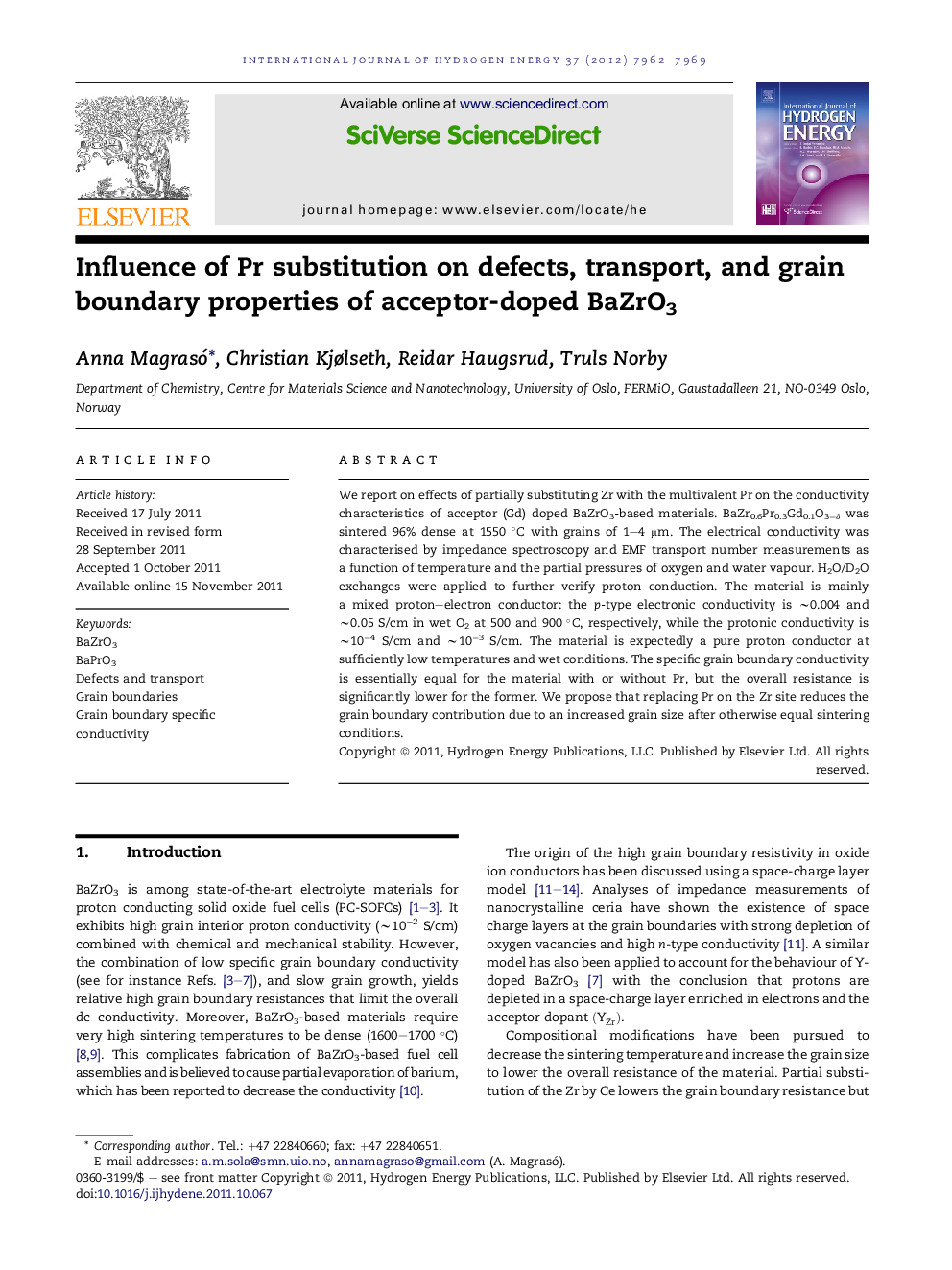| Article ID | Journal | Published Year | Pages | File Type |
|---|---|---|---|---|
| 1278602 | International Journal of Hydrogen Energy | 2012 | 8 Pages |
We report on effects of partially substituting Zr with the multivalent Pr on the conductivity characteristics of acceptor (Gd) doped BaZrO3-based materials. BaZr0.6Pr0.3Gd0.1O3−δ was sintered 96% dense at 1550 °C with grains of 1–4 μm. The electrical conductivity was characterised by impedance spectroscopy and EMF transport number measurements as a function of temperature and the partial pressures of oxygen and water vapour. H2O/D2O exchanges were applied to further verify proton conduction. The material is mainly a mixed proton–electron conductor: the p-type electronic conductivity is ∼0.004 and ∼0.05 S/cm in wet O2 at 500 and 900 °C, respectively, while the protonic conductivity is ∼10−4 S/cm and ∼10−3 S/cm. The material is expectedly a pure proton conductor at sufficiently low temperatures and wet conditions. The specific grain boundary conductivity is essentially equal for the material with or without Pr, but the overall resistance is significantly lower for the former. We propose that replacing Pr on the Zr site reduces the grain boundary contribution due to an increased grain size after otherwise equal sintering conditions.
► Pr substitution facilitates sintering and grain growth of Gd:BaZrO3. ► BaZr0.6Pr0.3Gd0.1O3−δ was sintered 96% dense at 1550 °C with grains of 1–4 μm. ► BaZr0.6Pr0.3Gd0.1O3−δ is a mixed electron–proton conductor. ► The specific grain boundary conductivity is essentially equal for the material with or without Pr. ► The overall resistance is significantly lower for the material with Pr due to an increased grain size.
